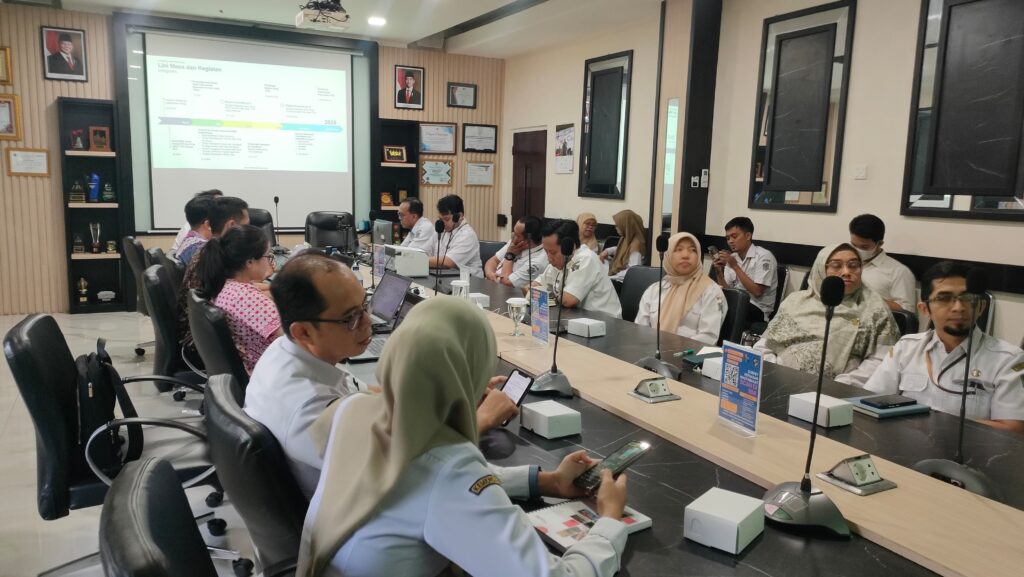- GCIEP is facilitating coordination between Surabaya and Sidoarjo to align transit-oriented development strategies to address challenges such as land subsidence, pollution and limited public transport.
- Strategic support aims to reduce planning fragmentation and foster scalable, environmentally sustainable urban growth across the Greater Surabaya region.
- Inputs from local governments will inform the upcoming TOD Roadmap for Greater Surabaya, ensuring city-specific priorities are reflected in regional planning.

Coordination meeting with government officers to discuss improving urban transport in Surabaya.
Following a provincial-level site visit in East Java, the Green Cities, Infrastructure and Energy Programme (GCIEP) has provided strategic and technical support to city-level transit-oriented development (TOD) planning in Surabaya and Sidoarjo Regency. These efforts are part of the broader Gerbangkertosusila (GKS+) initiative—an integrated metropolitan region encompassing multiple cities and regencies in East Java. By facilitating inter-jurisdictional collaboration, GCIEP is helping to bridge planning silos and foster more cohesive, sustainable urban development.
To support this, a series of coordination meetings were convened on 21 and 22 May 2025, aimed at aligning local and regional TOD priorities.The first meeting was hosted at the Surabaya Development Planning Agency, with participation from the city’s Transportation Agency, Spatial Planning Agency and Environmental Agency. Discussions focused on ensuring that Surabaya’s TOD ambitions, as East Java’s economic and mobility hub, are harmonised with the broader GKS+ development framework.
Surabaya’s urban landscape and economic role require tailored TOD solutions, yet alignment with neighbouring jurisdictions is essential for cohesive planning. Integrated strategies can unlock shared benefits such as improved connectivity, equitable access to services and reduced urban fragmentation, all of which are central to achieving sustainable regional growth.
The second day of discussions took place at the Sidoarjo Development Planning Agency, with attendees from key agencies including Transportation, Spatial Planning, Environment, Bina Marga and the Regional Financial and Asset Management Agency (BPKAD). The session focused on Sidoarjo’s unique urban challenges, particularly in the subdistricts of Porong, Waru and Krian—areas affected by land subsidence, limited access to public transport, constrained land use and environmental pressures. Participants explored opportunities to address these challenges by identifying suitable land, resolving regulatory constraints and prioritising infrastructure investments that support compact, transit-connected development. These interventions are critical to ensuring that Sidoarjo can contribute effectively to the vision of a connected and sustainable GKS+ region.
The insights and priorities gathered in these meetings directly inform the development of the GKS+ TOD Roadmap. This strategic document will integrate the perspectives of both Surabaya and Sidoarjo, balancing local needs with regional objectives. GCIEP’s continued support ensures that TOD planning in the GKS+ region is pursued in a coordinated, scalable and impactful way, enabling green infrastructure investments that benefit not only individual jurisdictions but the region as a whole.
The UK’s Green Cities, Infrastructure and Energy Programme is tackling climate change and extreme poverty by accelerating the delivery of sustainable green cities and climate-resilient infrastructure.
Published
02/07/25
